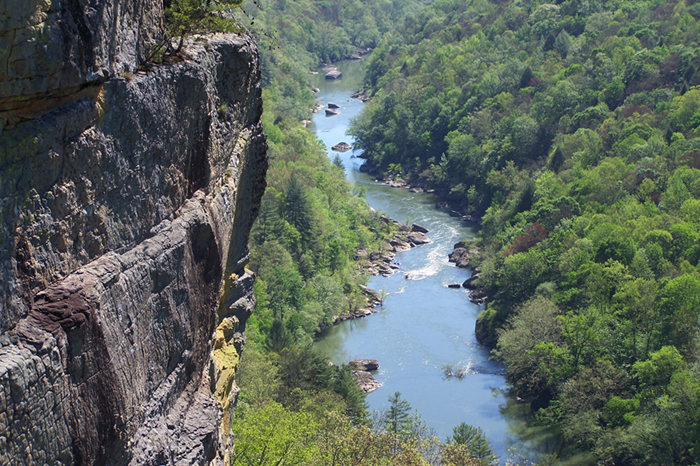
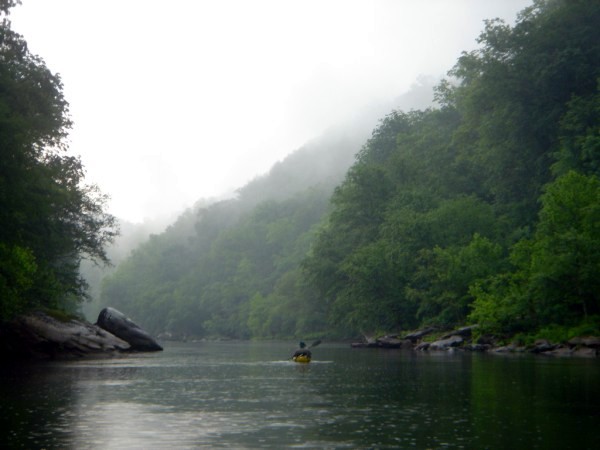
| Route 66 | Cities | Beaches |
 |
 |
Barren |
Blue |
Miami |
Whitewater |
| The Big South Fork is the most spectacular canoeing run in Kentucky. The South Fork of the Cumberland River has carved out a deep wilderness gorge through the high plateau where Kentucky and Tennessee meet. Further South, actually in Tennessee, the river is so wild it offers one of the great white water rafting runs in the South. By the time the river gets into Kentucky it's canoeable, but the higher runs are Class III. There are, however, two whole days of Class I and II water that we show in the photos on this page. As long as you've run the Licking, Elkhorn, Upper Rockcastle and Upper Cumberland and learned the basics of how to read water, position the canoe and thread through drops and riffles, you'll be fine. During the peaceful pools between drops, you can enjoy breathtaking scenery as the canyon walls tower high above you on both sides and giant boulders border the river or jut into the water. | 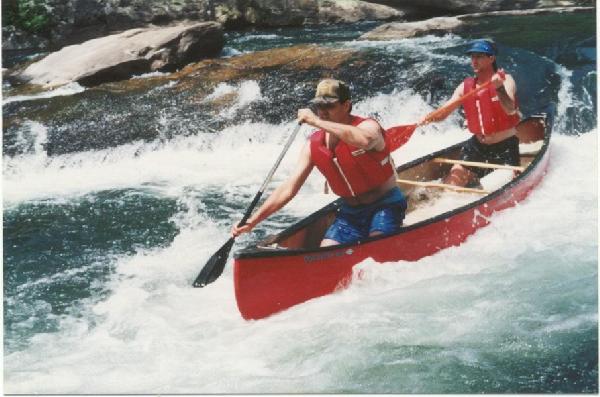 |
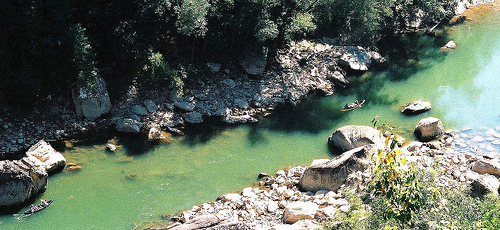 |
Your access to the river is through Sheltowee Trace Outfitters, a family business which has offered rafting and canoeing on the Big South Fork, Cumberland and Russell Fork for 32 years. They can be reached at 1-800-541-7238, or www.ky-rafting.com. They offer trips in various combinations, with put ins and take outs at Leatherwood, Station Camp, Blue Heron, Yamacraw, Alum Ford and Route 927. If you canoed all the way through from Leatherwood to Route 927 it would total 44 miles and require 3-4 days. Sheltowee Trace Outfitters are headquartered at the intersection of routes 25W and 90, five miles west of I-75 from either Exit 25 (coming down from Lexington) or Exit 15 (coming up from Tennessee), or five miles east of Cumberland Falls State Park. |
This is rugged, remote country, and you can't drive in, canoe and drive home in one day. You'll have to either camp, rent a cabin, or stay at the Cumberland Falls State Park Lodge. Sheltowee Trace Outfitters offers camping and rents cabins. They have small one bedroom cabins for $40 a night in the Spring and $50 a night all Summer. They also have larger cabins for youth groups or big families. On the night of arrival or morning of departure, you can eat dinner or breakfast at the Cumberland Falls State Park Lodge. There are no adequate outdoor supply centers, so you need to bring all food and equipment if you plan to cook and/or camp. Camping along the river is not a problem. The canyon is only accessible via the river or arduous backpacking trails, so you can choose from any number of nice spots near the water. Bring a good water purifier, though. There's no pollution upstream but Giardia Lambdia is common. In Spring and early Summer you can build wood fires, and there's plenty of driftwood laying along the river, but be sure to clean up thoroughly. Tomorrow's canoeists do not want to see your fire scars. Bring the rope and accessories to hang your food. Bear, possum, fox, coyote, raccoon, porcupine, wild boar and other mammals will snoop around your campsite between midnight and dawn. Do not wash utensils directly in the river, and as always, pack out all trash. There is one mandatory portage, the Class IV Devils Jump Rapid. The portage trail is river left. |
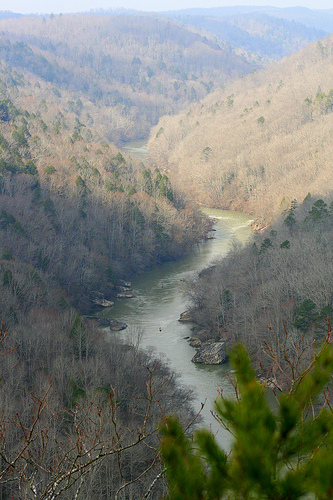 |
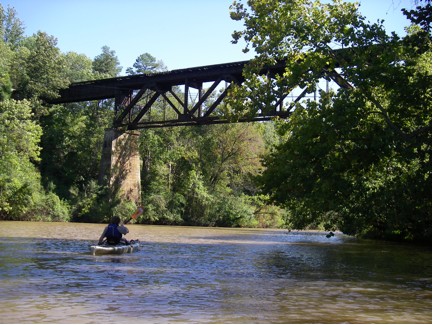 |
The Big South Fork is loosely referred to as a wilderness, but it's not an absolute wilderness. 100 years ago, there were coal mining and timbering operations here, and you'll paddle under several railroad bridges. There are occasional pieces of rusting industrial equipment sitting along the river or visible high on the slopes. Up on Charit Creek, there's an old boar hunting lodge now run as a wilderness backpacking and horse packing lodge by the National Park Service. The only way to reach it is by hiking or riding in several miles. There are park service roads bridging the river and several other roads coming down to riverside parking areas for dropping off or picking up canoeists, rafters, horse packers, fishermen or backpackers. This is currently classed as a National Recreation Area. Back in the 1970s, it and a grassland out in Kansas were designated as the next national parks. During the Reagan era and in the two decades since, the money has not been available to build the facilities needed for national park status. With the current economic slump and the move toward smaller government, eventual national park status is uncertain. Many locals are happy about this, as national parks are more tightly regulated. This would particularly impact horsepacking, fishing, hunting, mountain biking and ATVs. |
If you're into fishing, bring your gear. One partner can fish while the other paddles, or you can fish from shore once you set up camp. You'll find three kinds of Catfish (Channel, Blue and Flathead), with Flathead up to 50 pounds common. Muskie here average 20 pounds. Sunfish are quite plentiful, and there are six kinds of Bass (Redeye, Smallmouth, Striped, Largemouth, White and Spotted). Smallmouth come upstream from Lake Cumberland as far as Devils Jump, so that is an ideal place to fish for them. Striped Bass run up to 100 pounds. Brown and Rainbow Trout are here, along with Black and White Crappie. Walleye are considered by locals to be the best tasting fish in the river, but they're caught after sundown along sand or gravel bars, especially along Joe Shoal a mile downriver from Blue Heron. You can use either a Kentucky or Tennessee license, since the National Recreation Area is partly in each state. You don't need both. The rules are slightly different,but you'll be required to follow creel limits and other regulations according to which license you have. |
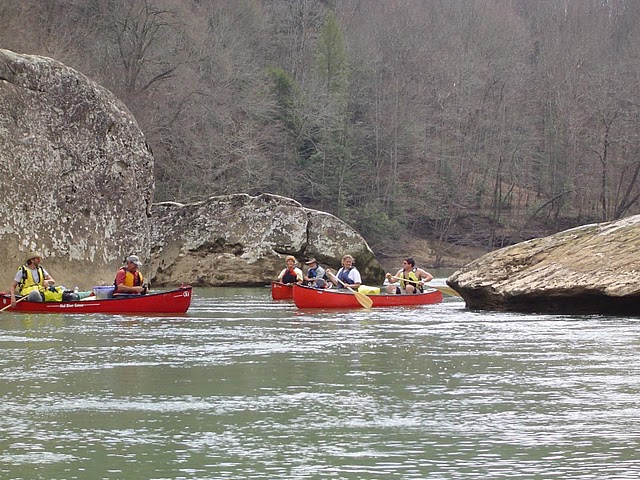 |
|
|||
|